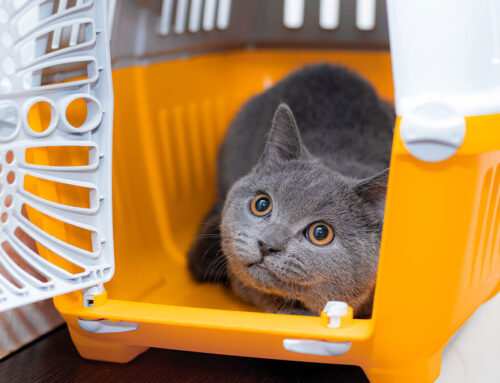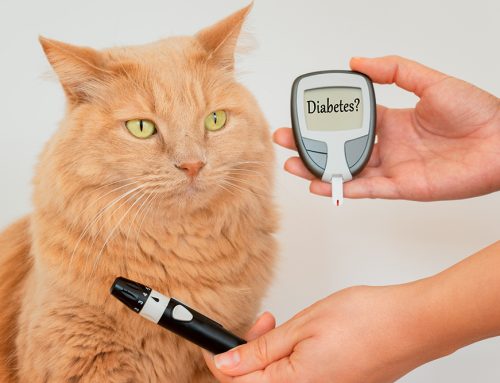April is Heartworm Prevention Month, but heartworm prevention is a year-round responsibility for pet owners. Our pets count on you to protect them, and you need to know about heartworm disease, to help keep your pet safe from this deadly condition. Our Star of Texas Veterinary Hospital is here to answer common questions about heartworm disease and help ensure your pet is protected.
Question: What is heartworm disease?
Answer: A heartworm (Dirofilaria immitis) is a variety of parasitic roundworms. Adult heartworms look like long spaghetti noodles and vary in length—female worms can reach up to 12 inches, and male worms are typically around nine inches long. Heartworms can live inside your dog for five to seven years, and lead to a wide range of health problems. Heartworm disease impacts the heart, lungs, and pulmonary blood vessels, and is potentially fatal. Heartworm disease severity depends on the number of worms living inside your pet, how long your pet has been infected, and their body’s infection response.
Question: How can my pet get heartworms?
A: Immature heartworms (i.e., microfilariae) are transmitted through an infected mosquito’s bite. The microfilariae enter your pet’s bloodstream through the bite wound and mature into adult heartworms in approximately six months. As the larvae progress into adulthood, they infect areas in and around the heart and lungs. Adult heartworms then produce a new set of microfilariae, and the cycle begins again. As the heartworms grow, they can be fatal to your pet, if left untreated. Note that infected pets cannot pass heartworms to other pets, because these parasites need a mosquito to develop to the infective stage.
Q: What types of pets can get heartworm disease?
A: Dogs are most at risk for heartworms, but any mammal—including humans in rare cases—can develop a heartworm infection. People are not natural heartworm hosts, and the larvae usually die before they become adult worms. Cats and ferrets are also susceptible to heartworms, although cats tend to be more resistant than dogs. No safe drug therapy treatment options are known for treating heartworms in cats, so prevention is the best way to keep them safe.
Q: What are heartworm disease signs in pets?
A: Heartworm disease appears differently in cats than in dogs. Heartworm disease signs may not be obvious in dogs who have been recently infected or are not active, but dogs who have been infected for a long time, or are extremely active, often will show obvious heartworm disease signs, including:
- Mild, persistent cough
- Reluctance to exercise
- Fatigue after exercise
- Decreased appetite
- Weight loss
As the disease progresses, dogs may develop heart failure and ascites (i.e., abdominal fluid buildup).
Detecting heartworm infections is harder in cats than in dogs, and not all cats with heartworm disease show signs. Some cats can rid themselves of heartworms without showing any signs, while others may die suddenly without ever looking sick. Some common heartworm signs in cats include:
- Vomiting
- Decreased activity
- Decreased appetite and weight loss
- Respiratory problems, such as trouble breathing, increased respiratory rate, and cough
Q: How is my pet checked for heartworm disease?
A: Heartworms reside in your pet’s circulatory system, so checking for heartworm disease requires a blood sample. Some limitations to the in-house heartworm test exist, however, because the test detects only adult female heartworms. If only immature heartworms and adult males may be present, the test may produce a false-negative result. If necessary, your veterinarian will send blood to an outside laboratory for more specific testing to confirm a diagnosis.
Q: Are treatment options available for heartworm disease in pets?
A: Heartworm disease treatment is difficult for both a pet and their owner. Because heartworm is progressive, the earlier the disease is detected and treated, the better your pet’s prognosis. In dogs, treatment is painful, and involves an arsenic compound injected deep into their lumbar muscles to kill the adult heartworms, with most dogs requiring a series of injections, spaced a month apart. Other medications may be necessary to help control the body’s inflammatory reaction as the worms die and break down in the lungs. During treatment and for some time after, your dog will require complete rest. If they are too active, they can suffer from potentially fatal side effects caused by a blockage of dying worms. Unfortunately, no heartworm treatment is available for cats.
Q: How can I protect my pet from heartworms?

A: Heartworm infection is almost 100% preventable in pets. A variety of heartworm preventives are available, in topical, oral, and injectable forms. The key is to ensure your pet receives their dose on time, every time. The American Heartworm Society recommends testing pets every 12 months for heartworm, and giving your pet a heartworm preventive year-round.
You can also reduce your pet’s heartworm disease risk through environmental control.
- Eliminate standing water sources that could attract mosquitoes.
- Check your window screens for rips and tears, to ensure mosquitoes can’t get inside the home.
- Avoid walking your dog in moist, shady spots favored by mosquitoes.
With heartworm disease in pets, prevention—rather than treatment—is essential. Contact Star of Texas Veterinary Hospital to ensure your pet is heartworm-negative, and to stock up on heartworm prevention medicine, to keep your pet safe from this serious and deadly disease.






